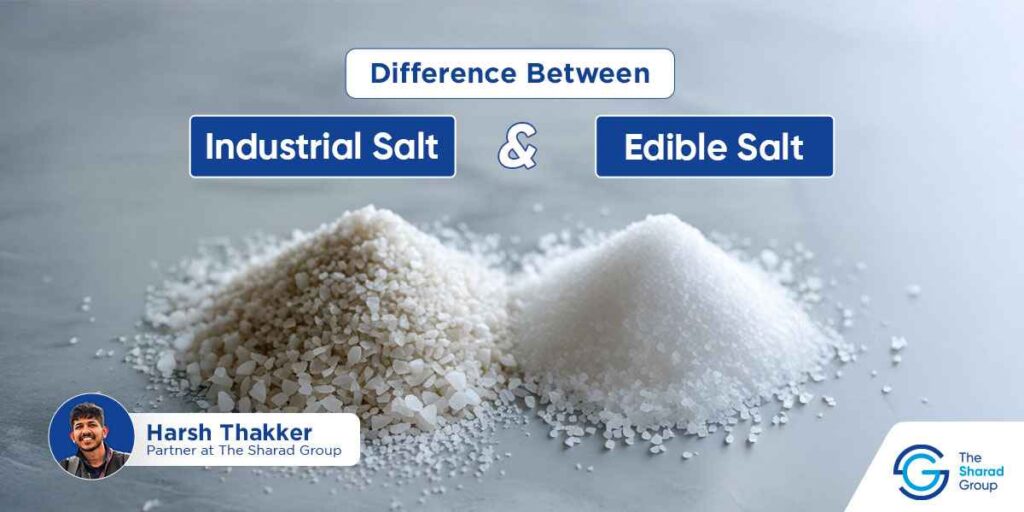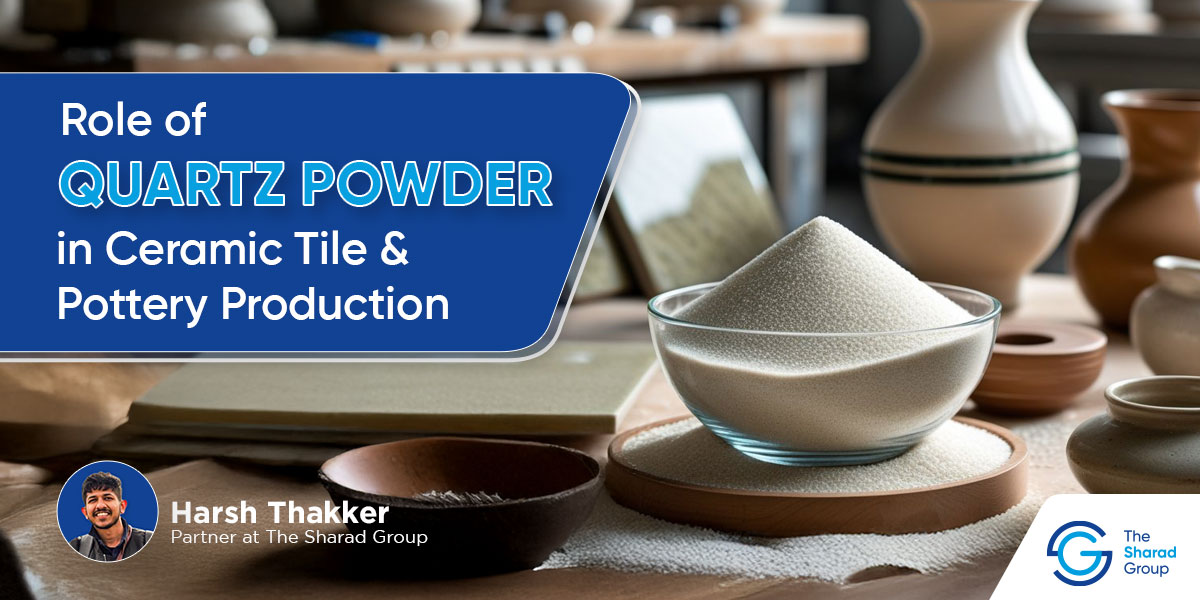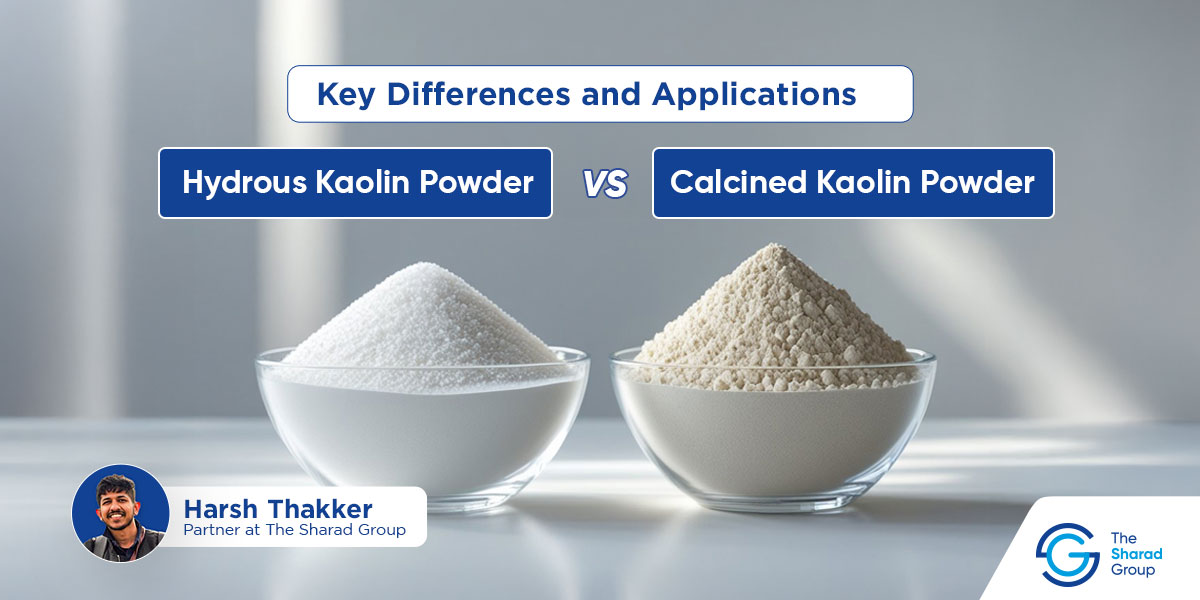Did you know that we produce and consume 300 million tons of salt every single year?
But not all of that is the salt that you see on your dinner table or at restaurants.
In fact, a majority of the salt that is both produced and consumed is industrial salt: a version of salt that’s both unsafe and actively harmful if consumed directly.
So, how exactly are industrial and edible salt different? How can you tell the difference between the different types of salt? And can you get both from the same supplier?
In this blog, I’m going to walk you through all the differences between industrial and edible salt, and answer key queries related to the two types of salt.
Let’s dive in!
Industrial Salt vs Edible Salt: Table of Contents
- What is Industrial Salt?
- What is Edible Salt?
- Key Differences Between Industrial and Edible Salt
- How to Identify Industrial Salt vs Table Salt?
- The Sharad Group: Your Reliable Salt Supplier
- Differences Between Industrial and Edible Salt: FAQs
What is Industrial Salt?
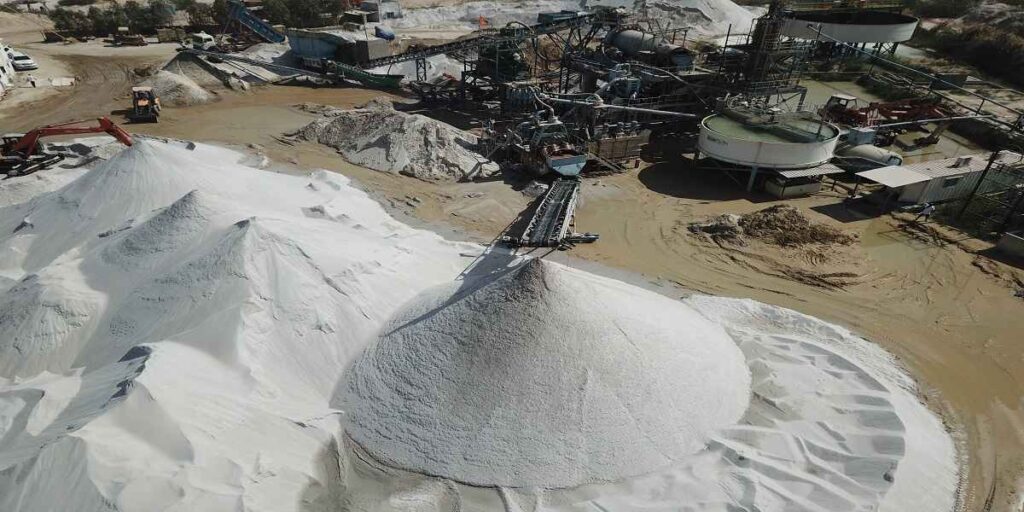
What's on this page:
ToggleIndustrial salt is a type of sodium chloride that is minimally refined and processed.
That’s because it is not primarily used for direct consumption, but rather for manufacturing, chemical production, and other applications like water treatment and de-icing.
Industrial salt suppliers obtain their salt from naturally occurring rock salt deposits and salt lakes or through evaporation techniques.
In my experience, it is industrial salt that dominates the consumption of globally produced salt. For instance, the United States alone uses 30 million metric tons of industrial salt for de-icing roads!
Let me show you why industrial salt has such diverse applications in manufacturing:
Key Characteristics of Industrial Salt
- It is low in purity as compared to edible, refined, or iodized salt, containing between 97-98.8% NaCl.
- Based on where salt manufacturers mine it, industrial salt might contain heavy metal purities such as heavy metals, nitrates, and sulfates.
- Industrial salt usually contains toxins and is thus unfit for human consumption.
You can commonly find industrial salt in granular, powdered, and tablet forms.
Common Applications of Industrial Salt
Industrial salt has a vast range of applications in a wide variety of industries:
- In the chemical industry, it is used to produce chlorine, caustic soda, and soda ash in bulk for paper, detergents, PVC, and other products.
- Industrial salt is also used to soften industrial wastewater for treatment and purification before discharge.
- One of the most important uses of industrial salt is in the textile & leather industry, where it is used in dyeing and tanning.
- Lastly, industrial salt is also used as a component in fertilizers and animal feed.
Next, let’s find out what edible salt is and where it comes from.
What is Edible Salt?
Edible salt, commonly known as table salt or iodized salt, is sodium chloride that has undergone heavy refinement to render it fit for human consumption.
Manufacturers usually produce table salt through seawater evaporation, salt rocks, or brine. Again, these compounds or sources of salt may contain impurities.
They are thus refined in accordance with governmental regulations and scientific guidelines to ensure that it doesn’t contain harmful toxins.
Let’s find out what makes edible salt different from industrial salt:
Key Characteristics of Edible Salt
- Table salt is high in purity, containing 99%+ NaCl.
- It is often iodized (it contains potassium iodide) so that it’s safe for day-to-day consumption.
- Edible salt might include anti-caking agents to ensure that it has an even flow for cooking and other applications.
Edible salt can be found in many forms: you may know it through names such as sea salt, iodized salt, and refined salt.
One trend I’ve noticed is the rise of flavoured salts, such as Himalayan pink salt, truffle salt, and smoked salt.
Key Differences Between Industrial and Edible Salt
In this section, we’ll closely look at the key factors of distinction between the two different types of salt.
We’ll compare it across key factors like composition, processing methods, and uses:
| Factor | Industrial Salt | Edible Salt |
| Composition | Contains impurities (heavy metals, nitrites) | Highly purified, may contain iodine |
| Purity | 97-98.8% NaCl | 99%+ NaCl |
| Processing | Minimal refining | Extensively refined & purified |
| Uses | Chemical manufacturing, water treatment, and de-icing | Cooking, seasoning, and food preservation |
| Safety | Toxic if ingested (can cause poisoning) | Safe for human consumption |
| Regulations | Not food-grade; marked “Not for consumption” | Strict food safety standards (FSSAI in India) |
Dangers of Consuming Industrial Salt
To show you just how harmful consuming industrial salt is for human health, let me show you how it can affect our health:
- Nitrite Poisoning Risk: If you consume just 3 grams of industrial salt containing sodium nitrite, it could end up fatally poisoning you.
- Heavy Metal Contamination: Industrial salt often contains lead, arsenic, and other toxins, depending on where it was mined. And these elements can cause long-term organ damage even in very small quantities.
- Iodine Deficiency: Even if you consume relatively unadulterated sea salt that has neither nitrates nor heavy metals, the lack of iodine in industrial salt can lead to goitre and thyroid disorders.
If by chance you end up consuming industrial salt, you might feel dizziness or experience vomiting and respiratory failure.
So, the best thing to do is to only consume salt that’s marked safe for consumption (the label will specify whether it’s iodized).
Industrial salt suppliers are also usually very different from edible salt manufacturers because they require completely different processes, operations, knowledge-base, and equipment.
How to Identify Industrial Salt vs Table Salt?
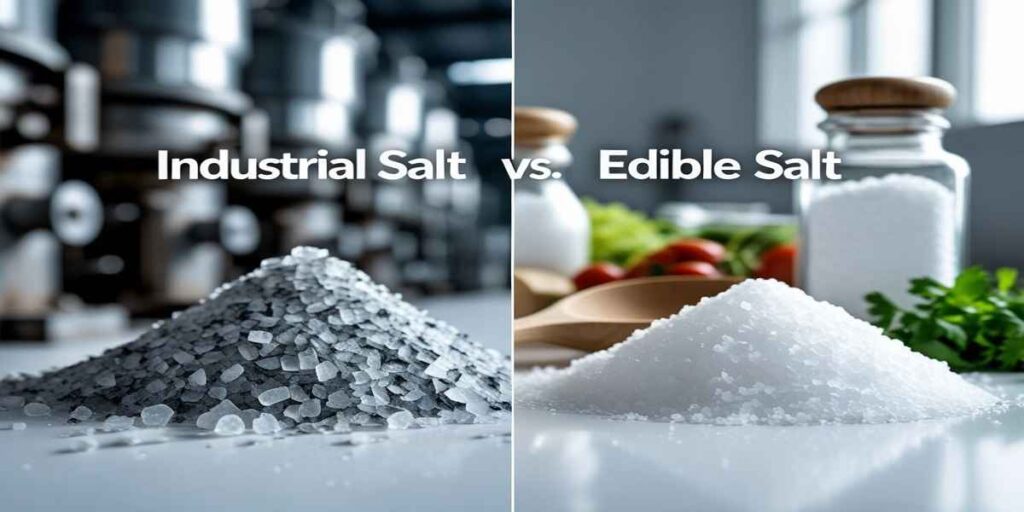
There are three different ways that you can tell industrial salt apart from table or edible salt:
- Packaging Label: As I’ve shown you above, industrial salt is marked “Not for Consumption.” In a similar way, edible or table salt will always say that it is iodized, and thus safe for human consumption.
- Appearance: The first thing you might notice about industrial salt is that it may have yellowish crystals. These tell you that it’s full of metallic or nitrous impurities. Edible salt, on the other hand, will have a consistently grainy texture and white appearance.
- Texture: Industrial salt often appears and feels extremely coarse when held or touched. Edible salt, on the other hand, is finer and free-flowing as it is heavily processed and refined.
The best way to identify table or edible salt is to look for FSSAI or ISO 22000 marks on the packaging label. If the salt matches all the physical characteristics of edible salt (see above) but this certification is missing, I suggest not consuming it!
The Sharad Group: Your Reliable Salt Supplier
While industrial and edible salt have widely varying applications, different chemical compositions, and distinct physical properties, they are both extremely important to industrial processes and human consumption.
And as humans consume more and more commercial and industrial products, the role of salt in our everyday lives is only increasing.
For example, more and more companies are using solar evaporation and vacuum techniques to acquire industrial as well as edible salt.
At The Sharad Group, we have consistently strived to keep up with the latest manufacturing and production trends to supply our manufacturing clients with quality industrial salt.
So, if you’re looking for a steady supplier of industrial salt for your operations, why not connect with us for free samples and a tailored quote that aligns with your requirements?
We might be the only suppliers you’ll ever need to work with!
Differences Between Industrial and Edible Salt: FAQs
1. What is industrial salt used for?
Industrial salt is used in various applications, including chemical manufacturing, water treatment, de-icing roads, textiles, and oil drilling. It’s not safe for consumption due to impurities.
2. Can industrial salt be used as edible salt?
No, industrial salt cannot be used as edible salt because it contains toxins like heavy metals and nitrites, making it unsafe for human consumption. So, you should always check labels for food-grade certification before consuming or purchasing salt.
3. How can I tell industrial salt apart from table salt?
Apart from table salt, you should look for yellowish crystals, coarse texture, and “Not for Consumption” labels. Edible salt is fine, white, and labeled “iodized”.
4. What are the dangers of consuming industrial salt?
Just 3 grams of industrial salt with nitrites can lead to fatal poisoning. Plus, long-term exposure to salt containing heavy metals may cause organ damage. Lastly, consuming otherwise safe but iodine-deficient salt can cause thyroid disorders or goitre.
5. Why is industrial salt cheaper than edible salt?
Industrial salt is cheaper than edible salt because it undergoes minimal refining compared to edible salt. Plus, industrial salt isn’t held to food safety standards like edible or table salt. Edible salt, on the other hand, requires purification, iodization, and the addition of anti-caking agents. All these operations raise the cost of edible salt.

